I was reminded yesterday as I consulted with a rescue dog owner, how little guidance there is for dog owners that adopt a rescue dog. When they bring their new dog home, they do what they think is right to help them acclimate to their new forever home, but often do exactly the WRONG things. Here are my best rescue dog tips:
What makes a dog – any dog – feel secure is predictability and structure in their life. This goes double for a rescue dog. What has been missing in their life is predictability and routine. They have lost their original family (if they ever had one), and often have been bounced from shelter to shelter, foster home to foster home, and so on. When they arrive at their new “real” home, they are often shell-shocked, nervous and full of emotional baggage. In response to their new dog’s emotionally challenged state (real or perceived), the new owner often falls over themself to accommodate and lavish the good life on their new dog. They avoid telling them “no” to anything, they make life as undemanding as possible, they avoid putting them in a crate or dog run for fear it will conjure up old nightmares, and generally walk on proverbial eggshells around them.
WRONG! It may seem like the right thing to do, but what these rescue dogs really need is NOT more freedom – freedom worries a dog. They want rules, they want a leader to assume their previous burden of survival and self-reliance and they yearn for clear understanding of where they fit in the new family hierarchy. (In the natural world of dogs, a clearly established pack hierarchy is one of the keys to a dog’s very survival). A rescue dog does not WANT the pressure of freedom, nor the burden of independence and self-reliance. They just want to know who’s driving the bus, and what their seat assignment is. LOL!
Lots of reasonable rules, consistently and compassionately enforced, will comfort and calm a rescue dog, because it takes the burden of choices and responsibility off of him. Don’t be afraid to set boundaries for behavior at home! Immediately enroll in training, enthusiastically take charge, and you will see your rescue dog blossom in the understanding that he has a strong and competent leader at the wheel, and a clearly defined place in the family where expectations are clear, rules are enforced, and he knows that his tomorrows will be the same as his today.
Do you have questions about YOUR rescue dog and his behaviors? Just ask!



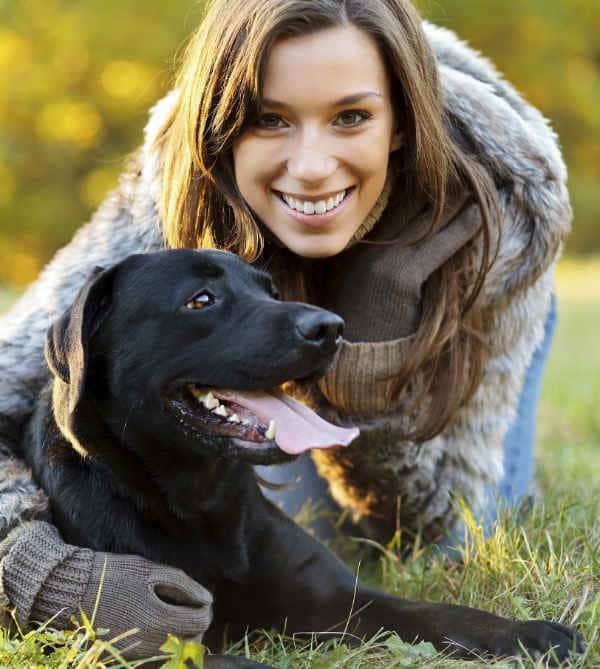
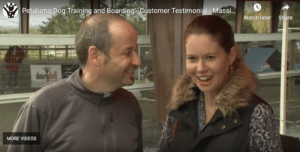
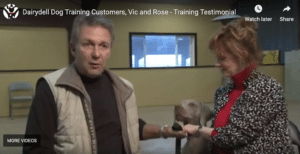
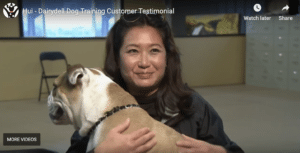
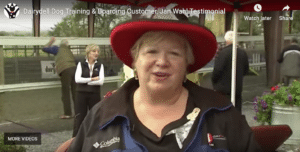



38 thoughts on “RULES TO THE RESCUE: Help a Rescue Dog Feel Secure”
Hi Camilla,
It’s Lexie, Izzy’s the german shepherds owner. So I got a rescue chi/min pin mix about a month ago(Dooley O’doul). Izzy loves him and is doing great.
Anyways, he hasn’t had much socialization (only 9 months now) due to his prior owners who kept him locked up in the bathroom. I take him EVERYWHERE and have enrolled him in training and daycare(when I’m at work). He’s definately doing so much better around people and dogs but I still have some issues. I found out the key with him is to have my friend take him on a walk and then he’ll trust people. However, do I get him to stop barking at strangers who want to come and pet him when we’re walking? I correct the barking but he still doesn’t really let people he doesn’t know near him. I think it’s mostly time but do you have any suggestions?
Lexie:
Whether or not your Dooley will ever become comfortable with new people is not predictable or controllable by you. Some dogs are just born Nervous Nellies, and their timidity is hard-wired. For these dogs, their early experiences are inconsequential. Socialization can change the threshold of what frightens them, but they are still and will always be, at their core, timid dogs.
The real issue is whether a timid dog will bite as a result of his fearful feelings. Some do, some don’t. Again, it’s how they are wired. If your little Dooley is not a fear biter, you can continue to have your friend walk him. Do not, however, encourage people to pet him. At this stage, just getting him out and about will be enough. More than that could be unnecessarily stressful for him – even traumatic. Part of trusting people will be his belief that not everyone will try to touch him.
If he does show signs of nipping in response to his fear, you should be the only one that walks him in public, and you will need to take great care that no one is allowed to pet him. Having strangers pet a fear-aggressive dog will not cure his fear, and the physical and legal risks are obvious.
Keep me posted, Lexie!
-Diva
Lexie:
I think this question got by my radar! I don’t see that I ever responded 🙁
Anyway, how is your little rescue dog doing these days? Shyness in a dog is a tough trait for owners to deal with and accept. A shy dog will most likely always be a shy dog – no matter how much socialization and human contact you give them. Shy dogs are generally born shy. Their early life experiences can exacerbate the shyness that’s already there…but they rarely cause it. One exception might be if a young dog was traumatized severely during a “fear imprint” window of time in early development. Either way, once the shyness is there, it’s there.
Keep working with your little guy. You CAN get him accustomed to your regular friends and family members over time. It is “new” people that will always make him a little nervous. Correcting for nervous barking is a hard call. If you correct barking before the dog believes that he can trust you to watch his back, you’ll actually make him more nervous.
One thing you can try to calm him down, hence reduce nervous barking, is a product that uses gentle pressure around the head and muzzle to quiet and comfort a bark-y dog. I’ve seen it in catalogs, but don’t remember what it is called. It’s simply a band of 1″ elastic than wraps in a figure-8 around the dog’s muzzle and fastens behind his ears. Made by the same folks that make the Anxiety Wrap, I believe. The working theory is that the gentle “hug” of the elasticized material makes a nervous dog feel more secure. Hey! It’s worth a try.
Let me know how it goes, Lexi.
-Diva Camilla
i have a papillion that was a rescue dog… my biggest problem is his barking every time someone enters the room…. not the house but the room that he is in at the time its driving the family crazy since they are the ones he constantly barks at.. any suggestions? thanks in advance chris
Hi, Christine:
Not knowing if your dog is barking because he’s timid, or because he’s territorial over his property, it’s hard to give exact advice.
One thing I find helpful with a barky dog is limiting their movement. I know it may sound odd, but when a dog is not allowed to run around a room, or back and forth…he tends to bark less. Sometimes, just putting a leash on a dog and requiring him to stay by your side will be enough to curtail excess barking. If your little dog still insists on barking, add an unexpected “spritz” from a squirt bottle to distract him.
Once again, I believe there is a direct connection between the degree of owner control and the sense of security a dog feels. As you limit and control your dog’s behavior, a timid dog will begin to feel less vulnerable, and a territorial dog will feel less “in charge” himself. Either way, barking should decrease as a result.
I hope that helps!
-Diva
I have a dog who barks in the strangest places, she barks when I have no control – example – dog park, she barks at people and dogs coming in, she is happy to see the dogs and wants to play and for them to hurry, not everyone sees that, I think they are concerned about the barking. She makes sure she stays out of my reach so I can not get her collar to make her stop barking. She barks in the car and I am driving and can not stop her. She does not bark in the house at home. I do not want to just keep her at home which would not be fair to her
Help,
Gerianne
Gerianne:
You have one smart dog! She KNOWS when you can and can’t control her, and takes advantage of the latter. What she is doing is testing the quality and depth of your leadership, and assessing just how much power you REALLY have. Because a dog’s very survival depends on a clear and effective chain of command, their instinct is to always test it to clarify it.
Try spending more time with your dog on leash (where you can be the undisputed leader) and less time off leash for a while (where she can call the shots). In the car, train her to sit beside you in a doggie seat belt, instead of letting her bounce around freely (and unreachable) in the back seat. With her in a seat belt, you can simply reach over to stop her barking if it starts – demonstrating to her, once again, that you DO have control over her. Power, when all is said and done, is determined by the ability to control – not the ability to yell.
Diva
I did the car thing and that is working – the dog on a lease in the dog park is a little harder – but I will still working on it. Just wanted to say thanks.
Gerianne:
You’re welcome!
I have four rescue dogs at the moment and I have already found a home for one. Three of which are my permanent (hopefully) ‘babies’. I was wondering the laws pertaining to rescuing without owner permission.
Alyssa:
Sounds like something for an attorney to answer. Also check books on local “Dog Law” – you may find your answer there.
-Diva
Alyssa:
I cannot believe your comment passed under my radar so long ago! I’m so sorry!
In terms of your question, I would imagine that there are, indeed, laws preventing “rescuing” a dog without owner permission unless you are a law enforcement official. I think the courts might call that “stealing”. It’s wonderful that you are obviously concerned for the well-being of dogs. Rather than rescuing without permission, however, try just talking pleasantly with the owner, and asking them what you might do to help their dog have some fun – maybe offering to walk their dog, brush it and play with it, etc. Give that a try; it’s a much kinder, more productive approach, I think.
Camilla:
Thanks for the reminder that Austin is a shy dog and always will be and it is not me. I forget he is so shy until he is put into a situation with strangers. But we continue to move forward and are make baby steps
Pat
Pat:
As I always love to say, “Lose the guilt!” Some things are just out of our control and we’re just along for the ride.
camilla
Hello,
I adopted a 2yr lhasa. He can get territorial with random things. The other day he got territorial over an empty bag of subway and didnt want to move. He would growl and snap at me and my fiance. He also growls if u try to move him when he feels like it. Most times he is fine, he even sits before i feed him and i make him sit before he enters the door after me. He has only been with us for a couple of weeks but Im worried he will get worse. How do I stop him from growling? I would say a firm NO he would sort of stop but only once I walk away would he really calm down. I do not want him to control us.
Please advise.
Lizzy
Once a dog begins growling, it means a couple of things: 1) His life experiences and freedoms thus far have led him to believe he has rank and authority and 2) That he is willing to use the growl/bite card to defend his perceived position.
I find that sweet persuasion and limiting everyday freedoms are most effective in modifying a dog’s aggressive behaviors. Keep a leash on your little guy at all times when you are home with him. Do not let him leave the room, get on the furniture or jump on you. Using the leash will let you enforce these rules without being bitten Taking away these simple freedoms will begin to take your little prince off his throne.
Be calm and matter of fact when you control him; getting angry will fuel his fire. Maintain a friendship with your dog, but with new rules. Praise him lavishly when he abides by them. Make him think they were his idea all along!
All that said, in my experience dogs that have bitten are dogs that are willing to bite. Be aware that your dog will always consider growling and biting an option. Training can, however, lessen the frequency of when he feels the need to use that option.
Diva
I just rescued a 2 year old dog. He was rescued from a cage in a backyard of a puppy mill and had no human interaction. His foster mom worked well with him so he is able to be around people, enjoys to be pet, but he is acting very insecure. He will only walk three places in our apartment. He goes from the bed in the living room, to the couch in the living room, and to his crate in the bedroom. He is very uncomfortable anywhere else. What can I do to make him feel more comfortable exploring the apartment? How can I make him more comfortable even going into the kitchen without running? He has only been with us for 10 days.
Hi, Elizabeth:
Give your new dog time to adjust. Don’t rush him. I’d suggest keeping a collar and leash on him in the house and using it to keep him with you wherever you go. It sounds like he will need a chaperone for a while…as he gets accustomed to his new life. Walking him around your apartment on leash will make him feel more secure, as opposed to exploring alone.
Don’t be surprised if his nervous behavior does not completely go away. It sounds like his cautious behavior could be indicative of his personality rather than his experiences (or lack of them.) The longer I work with dogs, the more I understand that personality is more nature than nurture. As owners, or job is to understand and accept the dog we have and help give them a life they can handle.
Bless you for taking in your new dog and giving him a new start!
— Diva
Hello. I’ve rescued my puppy when he was only six months old. He is half corgi and half golden retriever. When I rescued him he was with his mother (who was a corgi) and his brothers and sisters. When he arrived home he was very nervous due to the new environment. Yet, he listen to my every command. He was also very friendly to other dogs and to humans. I’ve had him for about a year. Now, he won’t listen to any command I tell him too. He’s also become very destructive especially in my backyard. Also, he will bite anyone he sees and he will try to attack every dog he sees. What should I do?
HI, Alexzandria:
Your puppy is growing into his adult personality, leaving the carefree days of puppyhood behind. In my 23 years with dogs as a breeder, trainer and behavior consultant, I’ve observed that a dog’s personality is, for the most part, destined from birth. In other words, a nervous puppy will grow into a nervous dog and a confident puppy, barring trauma, will be a confident adult. Most importantly, however, is that this personality is hard-wired into the dog and cannot be remade through training or socialization. In my early years, I did not believe this; now I submit to Nature’s power.
While we cannot “change” a dog’s personality, we can and must control their world in such a way that keeps them in their “happy place”, whatever that may be or however that may change over time. (READ my “Tip of the Iceberg” post on puppy personality and development.) It becomes our responsibility as owners and guardians to manage our dog and navigates them around all things that frighten them or cause them to act out in dangerous or destructive ways. Here’s my advice:
1. Enroll in a real obedience class to learn how to effectively control your dog when you need to.
2. Keep your dog away from situations that cause him to misbehave, bite or attack. For example, do not leave him alone in your backyard where he will destroy things. Build a secure and comfortable dog run, where he can stay while you are away and play with him in the back yard when you can supervise.
3. Teach your dog to wear a basket-style muzzle and be sure he wears this while you are out in public with him. (Basket muzzles allow a dog to pant and to drink.) You know he is prone to bite, so you must act responsibly to protect others. Not to do so could mean losing your dog, since many cities have mandatory destruction ordinances for “dangerous dogs.” He may even need to wear this muzzle in your obedience classes.
4. When you have visitors, your dog should either be safely in his dog run or closed in his crate in a quiet back room.
Unexpected visitors must wait until you crate your dog before they come in.
5. Spend lots of quality time working and playing with your dog at home to give him a happy, rewarding, lower-stress life!
Hope this helps!
-Diva
Hi, we have resused Bruce who unfortunitly has been re-home four times in the past. We have both had a lot of experience with large dogs he is a 1 year old Bull dog cross mastiff. He is so soft and loves people but isnt sure about socialising with other dogs he can get aggressive (especially with smaller dogs) then want to play or wants to play then when the other dog has had enough he then shows signs of aggression. We have had him 2 weeks so I know he is still settling in and very early days, we are very loving towards him but we also set clear rules he also has a good routine going. I have taken him to doggy day care and also he spent a day being assesed by a dog trainer. They feel he shouldnt be socialised in packs like doggy day care as worried it will make the situation worse and not to worry about paying for training just keep him at home and try training our selfs. Do you have any tips on socialising as feel its really important but worried about walking around other dogs incase he get aggressive again
Many thanks corene
Hi, Corene:
Happy New Year! I can’t remember if I already responded to this, your earlier question, but I will again — just to be sure.
Your Bruce’s nature is to be a little uncertain around new dogs, and since he personality make-up is not likely to change, I agree that doggie daycare and dog parks are not in his best interest. His type of soft, easily overwhelmed personality is usually more comfortable with the routine and familiarity of his family and established familiar dogs.
I would disagree on the value of training, however. (Yours, not the dog’s.) With the proper training guidance, you can learn to better control Bruce at home and on walks and so be able to take him out and about many places where he will learn to relax and trust you to protect him. Once a dog trusts the owner in uncomfortable situations, there is no need for aggression. These leader-controlled outings are the type of adventure and variety that your dog can enjoy, and when you learn to be stronger in your leadership skills, Bruce will likely begin to relax more when you venture out together.
Look for a trainer that teaches leadership, boundaries and control — not just commands like Sit, Stay, Down and Come. It is stronger leadership your Bruce needs; not just more cookies. Treats and motivators will indeed be useful in teaching various commands and cued behaviors, but only leadership will convince Bruce that he is safe in your charge. Without a leadership component, training is just parlor tricks.
If you are in my Northern California area, call me at Dairydell Canine! (707) 762-6111. If not, you can go to the website of the International Assn. of Canine Professionals (www.canineprofessionals.com), and search for a trainer in your area. Most IACP trainer members teach with a leadership focus.
Continued best wishes,
-Diva
Hi there, I adopted a two year old lab-Pitt mix after fostering him two months ago. He was such a sweetie – obedient, polite and only ever barked when his toy got stuck under the couch. So I took him everywhere – ball games, beach, cafes, parks – and he seemed vey well socialized. But a month ago when I came back from Christmas break, (he stayed with my boyfriend) he had an episode and started barking at everyone he saw on our night time walk. Since then he has barked at people at the most unpredictable times, escalating into even lunging at them…
He is still great with other dogs, loves daycare and dog parks. (Tho since aggression has escalated I haven’t taken him) A trainer worked wonders in seconds with leash/choke correction and both my boyfriend and I are implementing, but he still freaks out on anyone he sees in my lobby. I live in an apt in a busy area of the city with lots of visitors – Should I keep him at my boyfriend’s where it’s spacious and quiet until he’s trained out of this bad habit? We spend a lot of time there anyways…I’m also wondering if the back and forth between homes could have even caused this insecurity in my dog? I am so sad and want him to live with me, but I feel like I cannot trust him in any situation outside of my apt…and I know that me being upset probably makes it worse for him! Thank you for any advice – this was my first rescue 🙂
Hi, HS:
I can tell you have a BIG heart and really want to help this dog. The best thing any of us can do for our dogs, however, is keep them in their “happy place”, emotionally — whatever that is at the time. Right now, your apartment is clearly not this dog’s happy place! (No dog barks and lunges when they are happy.) As long as he is calm, relaxed and does not begin to show nervous aggression at your boyfriend’s, that is a better place for this rescue dog to stay. While he is there, see if you can work with a house-call trainer that can help both of you with developing better Leadership skills to help your nervous dog start to let go and relax. Your dog may always have a bit of this nervous self-protection tendency, but you can minimize it with training, to the extent that minimization is possible. Remember….HAPPY PLACE — whatever and where ever that is and however you can achieve it. Most dogs are happiest when someone else is leading!
We just adopted a mini Schnauzer, 9 months old. Very trainable, and we are being very strict and consistent. This is her fourth home.
We have a 6 year old Shih Tzu mix who is dominant in most situations, but docile in general. His dominiance is not aggressive. Pepper, the new one, has tussled aggressively with Mozart (the 6 year old). We are assuming this is due to her insecurity and newness on the scene. But what can we do to help them get along better?
Hi, Gwen:
Thanks for contacting me about your brewing sibling rivalry at home between your Shih Tzu and your new rescue dog.
Generally, dogs figure out their hierarchy if we let them do so. First and foremost, READ my post entitled; “Pins and Needles: Introducing a New Dog”. This post has critical advice on how to safely introduce a newcomer to an established home pack. THE BOTTOM LINE IS THIS: One dog must lead and other dog must follow for there to be peace. It’s Nature’s law. not mine.
If your Shih Tzu is boss material, he will set his own rules and boundaries. As long as your new little girl agrees to take second position, all should be fine. If, on the other hand, she is the natural boss, she will make the rules and he must follow them. (It has less to do with who-was-here-first, and more to do with who-was-born-to-lead.) Males and females generally work things out nicely.
You must LET your dogs go through the motions, however, of establishing Leader and Follower. The tricky part is that it generally involves some growling, posturing, maybe a little snapping, etc. If you jump in too soon and interrupt this discussion process, it will not be settled and disagreements will persist until it is. If “discussion” turns to fighting. however, of course you need to step in to stop the fight and re-evaluate your situation. BE CAREFUL HERE. Many dog bites happen breaking up dog fights! Perhaps having a trained professional guide this process would be your safest choice.
It would be good to know why your new Schnauzer has been surrendered so many times. If she fancies herself a Queen and is “socially challenged” with other dogs, you may have an issue that is more difficult to resolve. I’m crossing my fingers for you and the dogs, and that your two canine kids sort out their pack order smoothly.
– Diva
My boyfriend and I recently adopted a hound/boxer mix. Kaily is almost 2 years old and is as sweet as can be, but VERY shy and nervous. We have a five year old beagle mix, Spot, and he’s super friendly. Kaily adores Spot and follows him everywhere — they’ve definitely worked out the leader/follower situation :).
We’ve had Kaily for three weeks now, and she’s come so far already but loud noises, quick movements and strangers really bother her. Walks are a struggle. She gets excited about the idea and hype of a walk, but once we get outside she moves quickly, strangers who are hundreds of feet away make her so nervous, and in general she just wants to get back in the house. Hoping this gets better with time. Strangers are our biggest concern right now.
This weekend was the first time we’ve had someone over to visit. Kaily initially barked and ran away, but then was nervously interested. She’d come close (if one of us was nearby), but would periodically growl and bark at our friend. We told our friend to just ignore Kaily/no eye contact and she did okay for the most part. There were a few instances where our friend would be petting Spot and Kaily would growl and move toward them. She never got close enough for it to be threatening – never lunged at her – but the idea made me really nervous.
At this point we don’t know Kaily and her habits well enough to assure someone she wouldn’t bite them. Her mannerisms made me feel as if I needed to keep a hold on her. Is this normal? We’re planning on obedient school for some training/socialization, but because of how incredibly scared Kaily is right now, I feel like we need to wait until we’re sure Kaily trusts us fully. Do you agree?
Thank you!
Ainsley:
Thanks so much for reaching out. Here’s my take on what’s going om with your Kaily.
Kaily is telling you, by her actions, that she is comfortable with familiar people, pets and surroundings, but UNCOMFORTABLE around anyone unfamiliar or new. Her basic nature is to be shy and suspicious of anything unfamiliar, and no amount of training will change that personality. If she were MY dog, here’s what I would do: I would take what she is telling me to heart, and try to always keep her in her “happy place”. I would avoid putting her in situations that stress her out. I would give up on the idea of having her welcome strangers into the home, or having her enjoy being approached or petted by people she does not know. It’s just not in her nature.
Walk in quiet areas and do not encourage strangers to come over and interact; just keep walking happily along. When visitors come to your home, put Kaily in a comfortable back room or crate, away from the action, where she can feel more safe and secure. With your own family, let her enjoy and revel in the stable relationships that have developed with your other dog and with your family members. Kaily will thank you for it! Dogs need a comfortable environment, and we are the ones that control that.
Good luck and love to Kaily! 🙂
Diva
Hello, my name is Beth and I rescued a German Shepherd from Highway 3 out in the middle of nowhere one evening. He is the most perfect pet I have had (previously owned a Golden Retriever I loved to 16 years of age). This dog is well-adjusted. Knows manners and is smart. Stays out of the trash even when left alone with lemon cake and chicken bones (an accident). He gets along well with other dogs (so far has only been around small female dogs) and loves children. He walks beside me on a leash and sits beside me when I stop even! I think I can keep him, but need to find a solution to occasional pulling on the leash. He was to sniff every car in a parking lot and will pull harder than I can hold. I have painful joints and his yanking on the leash hurts me. Also- he doesn’t want to get out of my car. I have to get in the car with him and push him out with all my might. This again hurts me. (I wonder if he is looking for his prior family and remembers being shoved out). I love him and want to keep him (he had no chip and a shredded collar when I found him). I just really need help with his pulling me around at times. Can you give me your best suggestions?
Needing some help here,
Bet h
Hi, Beth;
I’m so happy for you AND your new found companion.
To your question re: pulling on the leash, the easy solution is finding the right training collar for you and for your dog. There are many brands and styles, and the right one is the one that works(!)
A simple head collar may be easiest for you to use. It will look like a little horse halter. I like the Halti brand myself, though you will need to find a trainer familiar with fitting it and teaching you proper technique.
Or, your big dog may need a traditional “nippy” style training collar in plastic or metal to disallow the pulling. Again, work with a trainer that is familiar and comfortable with the full array of metal or plastic training collars. Rest assured these collars are not mean or dangerous when used correctly.
Either collar style can solve a pulling problem quickly, and I suspect much more of your dog’s previous “training” will evidence itself once you are sitting more firmly in the driver’s seat.
Good luck!
-Diva
Hi there! So helpful reading all of the questions and your replies, above. now I’ve got one for you!
We are a family of four, two boys (now aged 10 and 8) and my husband and I work fulltime, although I work from home several times per week. I am the primary trainer.
We adopted our 3-year old mutt two years ago. Unsure what he is, looks like an uncropped doberman, or some kind of sight hound mix. Leggy and lean and loves to run. A walk in the ‘hood might be enjoyable but not exercise for him. He needs a 30-minute run alongside the bike or three hours at the beach chasing a ball at full speed. What he often gets is a walk in the ‘hood and some fetch in our fenced yard and a quick run with the bike.
He came to us nervous (tail tucked, bolting at every sound, didn’t know how to walk up stairs…) and underweight. But, had a soft mouth, a good expression and no aggression despite his obvious fear of the world. He adjusted quickly, within a few months.
Early on, he would mount my children — sometimes from a running start — and this resulted in lots of being knocked down. Tried it with us too, but we were able to correct it. I assumed this was based in a lack of social order in his world. I still don’t trust him with my youngest but he respects my 10-year-old.
He was (and still is) an energetic, high-maintenance dog. He barks at any and all sounds outside our yard, and recently ignores the band-aid citronella collar. He’ll just drain it.
We gated off the side of the house so he’s confined to a dog run when we’re not with him in the yard. We use a babygate to keep him in the room (kitchen or livingroom) that we are in. He is not allowed in the rest of the house. He is crate-trained and sleeps there at night. He is often leashed to me when indoors. He only sits still or sleeps if he’s tethered to me in one spot or in his crate. He ‘cases the joint’ otherwise.
Two years. I’ve been as consistent as I can be!
To say he is high-maintenance is an understatement. I’ve done obedience training and he will ‘sit’ and ‘down’ and wait until I release him to eat. He will sit at street corners on our walks. But he bolts into the house and barrels to the livingroom, sliding to stop on my hard-wood floors… unless he’s leashed to me. He will bolt out the front door if he’s not leashed to me.
My issues:
He has always been interested in watching the world go by from the front window, but he now barks at EVERYTHING (canine or human) that walks, rolls, or trots by. With hackles raised.
On two separate occasions this week, he sniffed an adult hand, and then lunged, barking (even nipping?) at them! – once on my doorstep (not a stranger) and once on the sidewalk (neighbor, he should know by sight/smell/sound).
What would cause this change in behavior? I cannot have a dog I can’t trust, in a home with kids. He’s already a lot of work for me, I’m afraid this might be the last straw.
Thanks for reading.
Hi, Trisha:
Yours is actually a very common lament. The behaviors exhibited in puppyhood are replaced with different (less tolerant) adult behaviors as a dog grows from puppy to dog. Puppies are babies for about a year, then adolescents during the second year, and they mature into their adult personalities about age 3-4, depending on the dog. Remember how you did not worry about things as much as a child? Remember the crazy things you used to do that risked life and limb but you didn’t take the consequences as seriously when you were 9? At 39 it’s different story. All animals — humans included — take risk much more seriously as they age, and risk tolerance goes way down.
It sounds like this is what is happening with your dog. By your description, he has always been nervous, but while he was younger he tolerated the things that scared him. Now he’s a big boy and (here’s the key) if he’s not seeing anyone else in the Lead Role in your family (responsible for pack protection among other things), he is filling that vacancy himself by acting to drive away perceived threats that he can no longer tolerate. His behavior sounds like that of a dog thrust unwillingly into a position of power that he is neither capable of or comfortable filling.
Try finding a trainer in your area that is familiar with Leadership Training — not just Sit/Stay commands and trained command performances — but ways that YOU can start taking charge and acting like the Leader your nervous boy needs. Setting boundaries, enforcing rules and reigning in freedoms. Those are all elements of leadership that your dog will understand and appreciate and can be added to your current command training. Take the burden from him. READ MY BOOK — LIPSTICK AND THE LEASH: Dog Training a Woman’s Way, which deals exclusively with leadership and natural power. You can learn more about it and order your copy at http://www.lipstickandtheleash.com.
Good luck, Trisha!
-Diva
Many thanks for the thoughtful reply – I will check it out!
Hi,
I’ve adopted a 2 year old mix from a local shelter. She looks like a bc mix from her features and size, but has a brindle coloring and her face/muzzle isnt as delicate as a typical border collie. She was very sweet and friendly at the shelter, somewhat shy but would approach and let you pet her on her own. When i picked her up to take her to the vet, she was very uncomfortable being inside the lobby. She was afraid of getting into the car, but once we put her in amd started driving she seemed to relax, no whining, no excessive drooling, no trying to escape, just lay down and occassionally look out the window. She did very well at the vet considering it was her first time. The loud noises worried her a bit but she stayed close to me while i pet her and eventually lay down and even took a nap. Then i get home, i take her for a short walk to get used to the surroundings and try to relieve herself. She was very unsure of everything walking a few steps then stopping looking at me, coming back to have me pet her. We met a man and his dog, and she was very friendly, walking up to sniff and let the man pet her, and nice manners with the dog. I took her inside after 20 mins and still no sign of going to the bathroom. She started acting nervous when we approached the door and tried to go back. I was able to coax her in but she was extremely scared and she went straight to one spot and lay down. I put out food and water but she ate nothing. I pet and talked to her hoping make her more calm and relaxed but she jist looked sad. Next morning i tried to take her for another walk but she wont move! And i dont want to force her amd make her scared of me. Morning of day three she lays in the same spot looking depressed. I was able to get her to eat some wet dog food and drink water. I leave her on her spot most of the day hopong she’ll come out on her own. Should i make her go out for a walk? Its one thing i know she enjoys but i also dont want to reaumatize her every time i bring her back in the house. What can i do to make her more relaxed and comfortable being inside? Would a training class help?
Hi, Marie;
YES — Do walk your new rescue dog. Sweetly insisting that she walk with you is the quickest way to introduce her to the reassuring fact that she had a Leader.
Start by walking her around your house. Then walk her around your yard. While you are at it, ask her to Sit and if she does not, gently push her bottom to the ground and pet her nicely when she molds into the correct position. That is, of course, assuming she is not fear aggressive with body language that is saying “stay away from me or I’ll bite you.”
Be sure to use a slip collar or slip lead of some sort that she cannot come out of if she balks or backs up. And just bring her along a few steps when she plants herself. Once she is walking obediently along with you when you move forward, she’s ready for a walk outside. Once she is more comfortable on her walks outside, and coming back inside the house with you, she may be ready for a small group class for learning more commands, etc.
It is amazing how quickly I have gotten new, nervous dog to come around with this simple walking technique! Try it. 🙂
-Diva
Hello:
I foster with a rescue and I have run into a problem that I haven’t encountered before in 12 years of fostering, so I don’t know how to handle it. There was a gorgeous male, neutered chocolate lab mix who was on his last day at the pound. He was e-listed for fear…a second level fear, not a first (first are the worst, 2nd is usually just fearful and little or no aggression towards humans). I evaluated him, as I do all potential dogs I take in, and he did well with my evaluation dog (he ignored her) and, although fearful, did alright with me. He would soften over time and exposure. I saw no one stepping up to take this guy, so I knew it was his last night unless I stepped up to take him as a foster. Here I am a few days later. He has warmed up to me a lot, although I don’t think he 100% trusts me yet, but he definitely is good with me and is no longer showing me fearful behavior. He is still fearful of strangers initially, although he does soften with interaction and warms up to some right away. He clearly had been well-cared for prior to ending up at the pound and had some training as he knew sit and paw. However, he was dumped by his prior owners when they moved, so now I am worried he is anxious and insecure and that is what is causing my main problem with him, he doesn’t get along with one of my personal dogs. He will ignore them and be fine walking around them, I’ve even taken them on walks together, but whenever he interacts with them directly (sniffing, etc.) he’ll go from positive behavior signals (tail wag, ears relaxed, mouth relaxed, etc.) to negative in a snap and with no discernible “bad” signals from my personal dog. He’ll growl, lunge and snap at them. All my personal dogs are very non-reactive and merely back off at his reaction, but I am worried one of them may get hurt (my dogs are both male, neutered dogs and roughly 15 lbs, much smaller than the foster, who’s around 45). He does get along ok with my submissive 30 lb female (she was the evaluation dog), although he bosses her around and occasionally will snap at her, but she backs off and totally submits to him. I would characterize his behavior as “bullying” her occasionally. I am comfortable enough to leave them off-leash together when supervised by me. I am not comfortable enough to leave him off-leash with my smaller dogs, as I don’t know what he’ll do. Someone suggested that he may be anxious and that is what is causing the random reaction, he is insecure and acting out. It has lessened over time, but I would like to get to a point where I don’t have to worry about him potentially attacking or reacting poorly to my personal dogs. Any thoughts/advice welcomed!
Hi, Kristen:
Thanks for reaching out. Your new rescue lab will probably always be fearful and reactive of NEW things, as that seems to be his innate personality. Recent experiences have not caused this behavior necessarily, but they may have exacerbated his cautious and suspicious nature.
With the passing of time in your home, however, he should become accustomed to your personal dogs — the dogs in his new “pack ” — and gradually come to accept them as he becomes familiar with them. Until that happens, however, I would suggest they be supervised and not left alone together. Though he may become comfortable with your dogs, with other dogs (or people) he will likely still be reactive and may be defensive. Anything “new” usually triggers fear aggression in this type of dog. He will actually be most comfortable at home with his peeps.
I am curious to know how old this dog is. If he is under 3 years, his fearful, reactive behavior to new things could in fact become more intense. (Read my post on puppy personality development.) It is very important that you start acting like a real leader now, to help mitigate this tendency and provide the stability and leadership strength he needs in order to relax.
Follow my suggestions in this Rules to the Rescue post! I wrote it for dogs like your new lab. Good luck and bless you for helping give this guy a shot at a good life!
-Diva
Hi Diva:
Thanks for the response. He’s actually not mine…I am just fostering him until he gets adopted, so I am trying to set him up for the best chance at success. Time has helped him chill out some, so I am hopeful this is only a temporary issue. I never let my foster dogs and personal dogs alone together unsupervised, until I am comfortable enough with the foster’s personality that I know there will not be an issue. He is somewhere between 5-7. He hasn’t shown any human aggression and has not shown aggression towards any other dogs, it’s just one of my personal dogs. They go on walks together and do just fine. I do have him in a structured environment and I am hopeful that will help him continue to chill out. He’s had a lot of changes recently and I know his life has been turned upside down more than once. I am hopeful I can figure out a solution for him as I can see glimpses of the amazing dog inside whose trust has been shattered. Thank you!